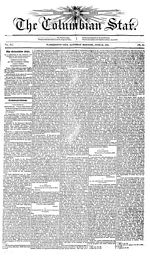|
Enter by decade: |
The Plough Boy JournalsThe Journals and Associated Documents The Plough Boy AnthologyThe Collected Works of William Hussey Macy Dictionaries & Glossaries |
The Plough Boy Anthology:Pitcairn's Island:Transcriptions of selected published accounts
| ||||||||||||||||||||||||||||||||||||||||||||||||||||||||||||||||||||||||||||||||||||||||||||||||||||||||||||||||||||||||||||||||||||||||||||||||||||||||||||||||||||||||||||||||||||||||||||||||||||||||||||||||||||||||||||||||||||||||||||||||||||||||||||||||||||||||||||||||||||||||||||||||||||||||||||||||||||||||||||||||||||||||||
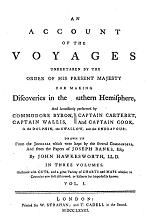
|
1767 - Discovery of Pitcairn's Island. An Account of the Voyages Undertaken by the Order of His Present Majesty for Making Discoveries in the Southern Hemisphere .... London: Strahan and Cadell, 1773 |
|
|
The account of the disovery and naming of Pitcairn's Island during the voyage of Captain Carteret, July 2, 1767. |
||
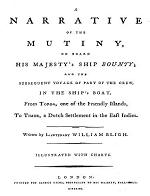
|
1790 - Bligh's Narrative of the Mutiny on the Bounty A Narrative of the Mutiny, on Board His Majesty's Ship Bounty; and the Subsequent Voyage of Part of the Crew, in the Ship's Boat, From Tofoa, one of the Friendly Islands, To Timor, a Dutch Settlement in the East Indies. London: George Nicol, 1790 |
|
|
The first published account of the mutiny on the Bounty written by ships commander. |
||
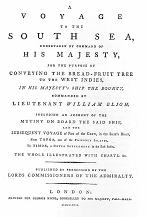
|
Bligh's Voyage to the South Sea. A voyage to the South sea, undertaken by command of His Majesty, for the purpose of conveying the bread-fruit tree to the West Indies, in His Majesty's ship the Bounty, commanded by Lieutenant William Bligh. Including an account of the mutiny on board the said ship, and the subsequent voyage of part of the crew, in the ship's boat, from Tofoa, one of the Friendly islands, to Timor, a Dutch settlement in the East Indies. The whole illustrated with charts, &c. London, Printed for G. Nicol, 1792. |
|
|
William Bligh's complete account of the voyage of the Bounty until the mutiny; his account of the mutiny; an account of the open-boat voyage from Tofoa to Timor and subsequent arrival in England. |
||
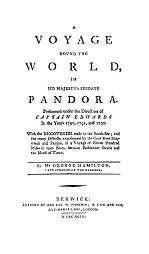
|
1793 Hamilton - Voyage of HMS Pandora A Voyage Round the World in His Majesty's Frigate Pandora Performed under the Direction of Captain Edwards in the Years 1790, 1791, and 1792. Berwick: W. Phorson, 1793 |
|
|
Account of the voyage of H.M.S. Pandora which was sent to the South Seas to find and apprehend the mutineers of the Bounty and to bring them back to England. |
||
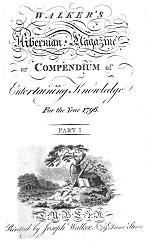
|
1794 & 1795 - Adventures of the Mutineers. "Authentic and Interesting Narrative of the Adventures of the Mutineers, who piratically seized his Majesty's Ship Bounty, under the Command of Captain Bligh, and were pursued by order of Government, by the Pandora Frigate, under the Command of Captain Edwards. Including a particular Detail of their singular Projects, and various Disagreements, Embarrassments, Escapes, Stratagems &c. in the Island of Otaheite." Walker's Hibernian Magazine or, Compendium of Entertaining Knowledge, Oct., Nov., Dec. 1794 & Jan. 1795. |
|
|
A less than factual account of the life of the Bounty mutineers on the island of Tahiti before they were apprehended by Captain Edwards of the Pandora. |
||

|
February 1, 1808 - Captain Mayhew Folger of the Topaz discovers the descendants to the Bounty mutineers. "In Captain Folger's Log Book: : A Thrilling Bit of Pitcairn Island History Recorded There." Dallas Morning News, April 10, 1897, p.6. |
|
|
Transcription from Captain Mayhew Folger's Topaz Logbook. Contemporary accounts in both England and the United States were from different sources. |
||
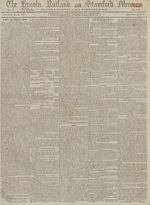
|
Extract from Capt. Mayhew Folger's journal about the discovery of the mutineers' settlement on Pitcairn's Island A newspaper article transcribed from: The Lincoln, Rutland and Stamford Mercury (Stamford, England), Friday, May 19, 1809; pg. 2; Issue 4078. (British Library Newspapers, Part IV: 1732-1950.) |
|
|
The first account of the discovery of the mutineers' settlement on Pitcairn's Island taken from the journal of Captain Mayhew Folger, of the Boston ship Topaz by Lieutenant William Fitzmaurice, Valparaiso, Oct 10, 1808. |
||
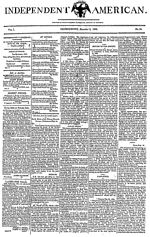
|
Mayhew Folger's 1808 Discovery of the Settlement on Pitcairn's Island as it First Appeared in the American Press: Late 1809-Early 1810 This transcription was taken from the following newspaper article: "Mutiny of the Bounty", Independent American (Georgetown, District of Columbia), November 9, 1809, page [1]. Readex: America's Historical Newspapers. Web. 30 Nov. 2016. |
|
|
The "Extract of a letter from Buenos Ayres, to a merchant in Cork, dated June 19, 1809" was reproduced in many American newspapers in late 1809 and early 1810. For some reason the press in the United States did not pick up and reproduce the transcription of parts of Captain Folger's journal which were sent to the admiralty in London and reproduced widely in Britian as well as in Australia and India. |
||
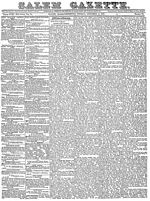
|
September 1828 - Captain Mayhew Folger dies in Ohio. "Deaths" Salem Gazette Salem, Massachusetts, October 3, 1828, p.3. |
|
|
Captain Mayhew Folger, of the Topaz, who discovered the mutineers' colony on Pitcairn's Island in 1808, dies in Ohio. |
||
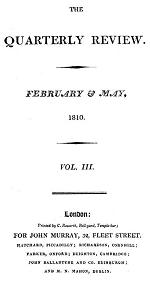
|
Selection from a review of Voyage de Dentrecasteaux, envoye a la Recherche de la Perouse, publie par Ordre de Sa Majeste l’Empereur et Roi, sous le Ministere de S. E. le Vice-Amiral Decres, Comte de l’ Empire. Redige par M. de Rossel, Ancien Capitaine de Vaisseau. 2 Tom. avec un Atlas. a Paris, 1808. "" Attributed to John Barrow. Quarterly Review, Vol. 3, No. 5 (Feb. 1810), pp. 23-24. |
|
|
The first apparent acknowledgement by the Admiralty of the American discovery of the colony of descendants of the mutineers of the Bounty on Pitcairn's Island. The review was reprinted in: Select Reviews, and Spirit of the Foreign Magazines (Philadelphia), Vol. 4, (Sept. 1810), p.145-162. |
||
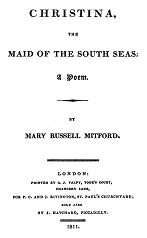
|
1811 - Mary Russel Mitford's epic poem, Christina Maid of the South Seas Christina, the Maid of the South Seas: A Poem. London: A. J. Valpy, 1811. |
|
|
An interesting application of imagination when the only thing known of the colony on Pitcairn's Island was what had been related about Folger's discovery in 1808. |
||
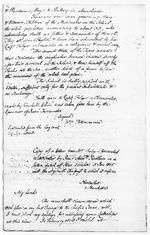
|
Capt. Mayhew Folger's letter to the Admiralty about his discovery of the mutineers' colony on Pitcairn's Island. This transcription is taken from documents in Series 71.03 'Copy of a letter from Mr Folger, forwarded to Mr Croker by Rear Adml Rodham...' 1 March 1813. in the collection of the State Library, New South Wales. The overall series name is: Series 71: Papers concerning the discovery of Pitcairn Island and the mutineers of HMS Bounty, 1808-1809, 1813-1815, [1845] Frame numbers used for the transcription:
|
|
|
Captain Mayhew Folger, discoverer of the the mutineers' colony on Pitcairn's Island, writes the Admiralty, in the midst of the War of 1812, noting his discovery and sending the Bounty's asimuth compass that had been given to my by Adam Smith (i.e. John Adams) in 1808. |
||
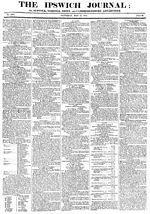
|
The First Account of the Royal Navy's Discovery of the Pitcairn's Island Colony is Brought to England by H.M.S. Cherub in 1815. "Wednesday's Post.", The Ipswich Journal (Ipswich, England), Saturday, May 13, 1815. British Library Newspapers, Part I: 1800-1900. Web. 1 Dec. 2016. |
|
|
Two British warships, H.M.S. Briton and H.M.S. Tagus, returning to Valparaiso from the campaign against Captain David Porter of the U.S. Frigate Essex in the Pacific, sight an island not on their charts which they assume is Pitcairn's Island. Initially unaware of Captain Mayhew Folger's prior discovery in 1808, they are surprised at finding an English-speaking colony in the South Seas. H.M.S. Cherub, arriving in England two months before the Briton, brought a report of the Pitcairn's discovery by Captain Sir Thomas Staines. |
||
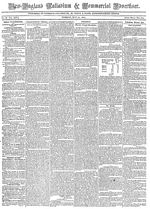
|
American Newspaper Accounts of the 1814 'Discovery' of Pitcairn's Island by the British Warships
Briton (Captain Staines) and
Tagus (Captain Pipon).
Merrimack Intelligencer (Haverhill, |
|
|
The first account of the 'discovery' of the mutineers' colonly on Pitcairn's Island by the Briton and Tagus to reach the United States was brief but it noted that earlier the Topaz of Boston, Captain Folger, had visited about 6 years earlier. This article was reproduced in a number of other American newspapers. |
||
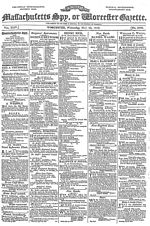
|
Sir Thomas Staines' Early account of the Rediscovery of the Colony on Pitcairn's Island in 1814: The Visit of H.M.S. Briton. "From Late English Papers: Mutineers of the Bounty", Thomas's Massachusetts Spy, or Worcester Gazette (Worcester, Massachusetts), May 22, 1816, page [4]. Readex: America's Historical Newspapers. Web. 30 Nov. 2016. |
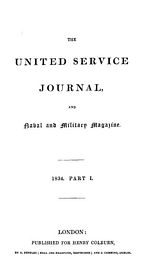
|
The Descendants of the Bounty's Crew: As First Discovered by the Briton and Tagus Frigates. – From the Unpublished Mss. of the Late Capt. Pipon, R.N. – September 1814. "The Descendants of the Bounty's Crew: As First Discovered by the Briton and Tagus Frigates. – From the Unpublished Mss. of the Late Capt. Pipon, R.N." The United service journal, 1834, Pt.1:pp.191-199. |
|
|
While Captain Pipon's journal entries covering the discovery of the mutineers' colony by two British men-of-war in 1814 was not published in full until 1834, parts of his account appeared in contemporary journal and newspaper accounts. |
||
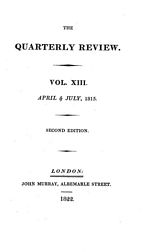
|
Extract from John Barrow's 1815 Quarterly Review article on Captain David Porter's Journal of a Cruize ... " "Journal of a Cruize made to the Pacific Ocean by Captain David Porter, in the United States Frigate Essex, in the years 1812, 1813, and 1814, containing Descriptions of the Cape de Verd Islands, Coasts of Brazil, Patagonia, Chili and Peru, and of the Gallapagos Islands. Also a full Account of the Washington Group of Islands; the Manners, Customs, Dress of the Inhabitants, &c. &c.", Quarterly Review, Vol.13, No. 26 (July 1815), p.374—383. |
|
|
John Barrow, the long-time Second Secretary to the Admiralty, brings the Mutiny on the Bounty / Pitcairn's Island story up to date by summarizing communications to the admiralty from Captain Mayhew Folger of the Topaz, Captain Thomas Staines of H.M.S. Briton and Captain Philip Pipon of H.M.S. Tagus. |
||
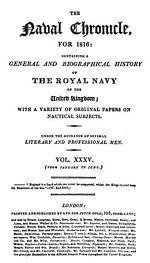
|
The January 1816 Naval Chronicle précis of the 1815 Quarterly Review account of Pitcairn's Island and the history of the Bounty Mutineers. "Mutineers of the Bounty", Naval Chronicle, Vol. 35, (Jan 1816), pp.17-25. |
|
|
Many newpapers and journals reproduced this article in 1816 and following years. |
||
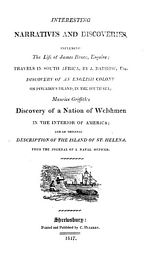
|
John Barrow's reworked account of Pitcairn's Island from the 1815 Quarterly Review This transcription has been made from the following: "Discovery of an English Colony on Pitcairn's Island." in |
|
|
This account is digested from John Barrow's widely printed and circulated 1815 extract from his review of Captain David Porter's Journal of a Cruize ... The lists of mutineers apprehended in Tahiti, the letters of Captain Mayhew Folger of the Topaz, and Sir Thomas Staines of H.M.S. Briton which appeared in the original have been excluded here. |
||
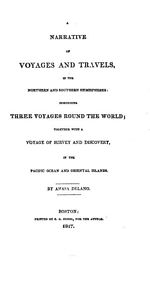
|
1817 - Amasa Delano's Narrative on Pitcairn's Island. Amasa Delano. |
|
|
Transcribed here are chapters 5 and 6 of Delano's Narrative which deal with the history of the mutiny on the Bounty and the discovery of the Pitcairn's Island community by his friend Captain Mayhew Folger of the ship Topaz. |
||
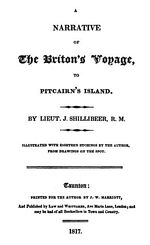
|
Shillibeer's account of the Briton's 'discovery' of Pitcairn's Island in 1814. Shillibeer, John, 1786-1841. |
|
|
Despite the title of this book, only one chapter is devoted to the visit of the Briton and Tagus to Pitcairn's Island. Shillibeer himself did not go ashore at the island -- only the two captains landed. |
||
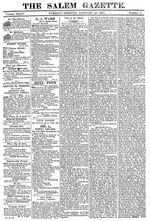
|
The 1817 visit of the American ship Sultan to Pitcairn's Island. The source of the transcription is an article in the January 16, 1821 issue of the Salem Gazette, page 2. According to Topliff's introduction, the article is an expansion of his earlier article in the New-England Galaxy of January 12, 1821. |
|
|
Samuel Topliff's 1821 Salem Gazette article on the visit of the Sultan to Pitcairn's Island in October 1817. |
||
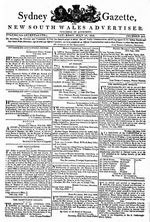
|
1818/1819 Account of the early history of Pitcairn's Island by Jenny (Teehuteatuaonoa), once the consort of John Adams and later that of Isaac Martin. This transcription is from: "Account of the Mutineers of the Ship Bounty, and their Descendants at Pitcairn's Island", Sydney Gazette and New South Wales Advertiser, July 17, 1819, p.3. |
|
|
Jenny (Teehuteatuaonoa) left Pitcairn's Island in 1817 on board the Sultan. Some months after her departure she once again returned to Tahiti. There, on several occasions, she told the story of the Bounty mutineers. Her account is one of the most complete eye-witness accounts of the early history of the Pitcairn's Island colony. |
||
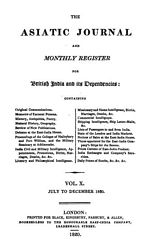
|
Captain Henderson of the Hercules on his January 1819 Visit to Pitcairn's Island. "Pitcairn's Island", The Asiatic Journal and Monthly Register for British India and its Dependencies, Vol. X, No. 55 (July 1820), pp.36-40. |
|
|
Captain Henderson sent notes of his first visit to Pitcairn's Island to the Calcutta Journal. The article in the Asiatic Journal includes Henderson's remarks between a short history of the Pitcairn's Island community and Jenny's account of the island's history. |
||
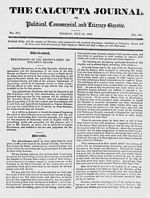
|
Following the January 1819 visit to Pitcairn's Island of the ship Hercules, Captain Henderson, a subscription for its residents is raised in Calcutta. "Descendants of the Bounty's Crew, on Pitcairn's Island", The Calcutta Journal or Political, Commercial, and Literary Gazette. Vol. IV, No. 133 (July 13, 1819), cols. 161-162 to 167-168. |
|
|
This publication was soliciting money and materials for the residents of Pitcairn's Island. The bulk of the article describing the island and its history is reprinted from the Naval Chronicle, Vol. 35, January 1816, pp.17-25, which had the title "Mutineers of the Bounty". |
||
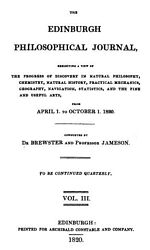
|
Extract from the Journal of Captain Henry King of the Elizabeth - March 1819. This transcription is from: "Extract from the Journal of Captain Henry King of the Elizabeth", The Edinburgh Philosophical Journal, Vol. 3, no. 6 (Oct 1820), pp. 380-388. |
|
|
The first of two visits by the British whaleship Elizabeth to Pitcairn's Island. Henry King was the captain in March 1819; William Douglas was the captain on the second visit – probably in 1820. In June 1824 the Elizabeth was attacked by natives of the island Vavoo in the Friendly Islands where Captain Douglas died of wounds he received. Captain Thomas Raine of the English ship Surry remarked in his report on Pitcairn's Island that the Pitcairners "[I]n drinking healths they always added Capt King and Capt Douglas ...". |
||
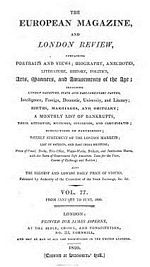
|
John Adams' Letter to his brother in London, January 18, 1819. "To the Editor of the European Magazine.", |
|
|
This letter, written by John Adams on Pitcairn's Island, to his brother in London was probably carried initially by Captain Henderson in the Hercules who was en route to Calcutta. |
||
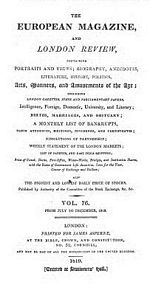
|
John Adams' Letter to his brother in London, March 3, 1819. "To the Editor of the European Magazine.", |
|
|
This letter was probably carried to London by the English South Sea whaleship Elizabeth, Captain Henry King. The Elizabeth arrived at Deptford on July 13, 1819. |
||
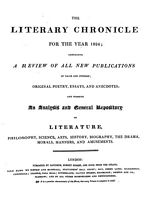
|
Captain Thomas Raine of the ship Surry of London visits Pitcairn's Island in April 1821. "Narrative of a Visit to Pitcairn's Island, in the Ship Surrey, in the year 1821. By Capt. Raine", The Literary Chronicle and Weekly Review. No. 268, July 3, 1824. pp. 425-427. & |
|
|
"Narrative of a Visit to Pitcairn's Island in the year 1821", [Continued from p. 427], The Literary Chronicle and Weekly Review. No. 270, July 17, 1824. pp. 460-462. |
||
|
The original source of the article reprinted in the Literary Chronicle of London was the following article: Thomas Raine. Earlier in April, the Surry rescued three crewmen of the Nantucket whaleship Essex (which had been sunk by a whale) who had been stranded there for three and a half months. Captain Raine had been contracted by Commodore Ridgely of the U.S. frigate Constellation, to pick up the three crew members of the Essex. |
||
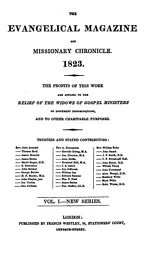
|
Letter from a "professional gentleman" about his December 1822? visit to Pitcairn's Island. "Pitcairn's Island," |
|
|
The identity of this "professional gentlemen" is not known. There appears to be no record of a vessel visiting Pitcairn's Island in December 1822. |
||
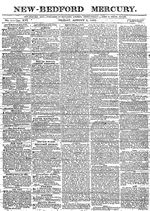
|
Reports of the Russell and Apollo, 1822. "New Bedford Mercury" New Bedford, Massachusetts, August 9, 1822. |
|
|
The U. S. frigate Constellallon reports on the Russell and the Apollo following their visit to Pitcairn's Island. This vessel also brought news of the Pitcairn's Island visit to the United States prior to Captain Frederick Arthur's return to New Bedford in the Russell on October 7, 1822. |
||
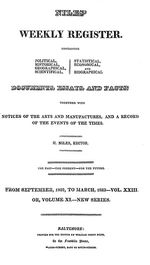
|
1822 - Captain Ridgely, of the U.S. Frigate Constellation, gives report to a New York newspaper which was copied from Captain Frederick Arthur's journal on the visit of his whaleship, the Russell, to Pitcairn's Island, March 8-12, 1822. "Pitcairn's Island." Niles' Weekly Register, Vol. 11 No. 8, new series [Vol 23 no.5, whole number 580], October 26, 1822, pp.123-124. |
|
|
The widely published account of Captain Frederick Arthur on his visit to Pitcairn's Island in March 1822 in the ship Russell and accompanied by the ship Apollo. |
||
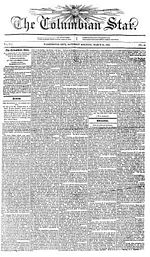
|
An 1823 American newspaper reprints a London newspaper article about Captain Arthur's visit to Pitcairn's Island in March 1822. "Late Omissions / Pitcairn's Island," The Columbian Star (Washington, D.C.,) March 22, 1823, p. 4. |
|
|
This is one of several newspaper articles about the visit of whaleship Russell, Captain Frederick Arthur, to Pitcairn's Island in March 1822. |
||

|
The second visit of the ship Hercules, Captain Henderson, to Pitcairn's Island in May 1822. "Pitcairn's Island", |
|
|
This short news note appeared in many newspapers in Britain and the United States. |
||
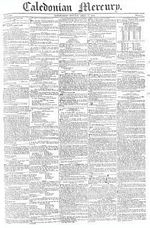
|
In April 1822, the Hercules, Captain Henderson, visits Pitcairn's Island for the second time and delivers the gifts from the Calcutta subscription. "Pitcairn's Island", |
|
|
After Captain Henderson's first visit to Pitcairn's Island in 1819 a subscription was taken in Calcutta for the benefit of the island's residents. In 1822 the Hercules delivered the gifts while passing from Valparaiso to Calcutta. Notice of this visit does not appear in the shipping register which accompanies the Pitcairn Island Register. |
||
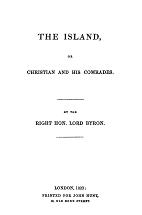
|
1823 - Lord Byron's The Island. The Island, or Christian and his Comrades. London: Printed for John Hunt, 1823. |
|
|
The poet Byron's narrative poetic fantasy about Chritian and his compatriots after the Bounty mutiny. |
||
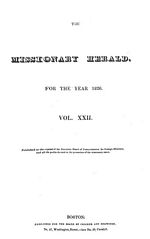
|
July 1824 Letter from John Adams to Rev. Hiram Bingham. "Letter from Pitcairn's Island to the Rev. Hiram Bingham". The Missionary Herald, Vol. 22, No. 9 (September 1826), pp. 278. |
|
|
Once again John Adams appeals for a minister of the gospel to be sent to Pitcairn's Island. |
||
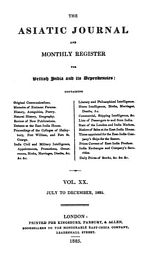
|
The Asiatic Journal's list of Pitcairn's Island inhabitants on April 24, 1823. "Inhabitants of Pitcairn's Island", Asiatic Journal, Vol. 20, No. 119 (November 1825), p. 518. |
|
|
A list of the inhabitants of Pitcairn's Island dated April 24, 1823. The individual who recorded this list and the vessel which took him to the island are not known. |
||
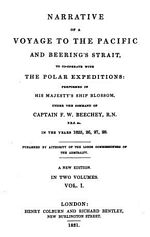
|
Captain Frederick Beechey at Pitcairn's Island in 1825. Frederick W. Beechey |
|
|
Captain Beechey's account of his visit to Pitcairn's Island in H.M.S. Blossom was perhaps the most informative and detailed description and history recorded in the nineteenth century. |
||

|
1825 William Cullen Bryant's 1825 poem -- "A Song of Pitcairn's Island". B. [William Cullen Bryant], |
|
|
Bryant was an editor of the new publication The New York Review and Athenaeum Magazine when, in its inaugural issue, he first published the poem "A Song of Pitcairn's Island". The poem was very popular and appeared in numerous anthogies and magazines of the time. |
||
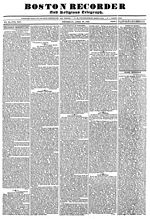
|
1827 - Pitcairn's Island at the time of the whaleship Connecticut's visit in February 1827. "Pitcairn's Island", The Boston Recorder (Boston, Massachusetts), April 30, 1829, page 69. |
|
|
This newspaper article was coauthored by two missionaries returning to the United States from the Sandwich Islands. One of the missionaries, Dr. Abraham Blatchley, returned to the United States on the whaleship Connecticut, which stopped at Tahiti and Pitcairn's Island in early 1827. The article mentions Jane Quintals departure from Pitcairn's Island for Tahiti. |
||
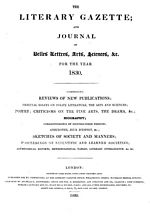
|
1830 - First News of John Adams' Death in Britain. "Death of John Adams, &c.", The London Literary Gazette; and Journal of the Belles' Lettres, Arts, Sciences, &c., No. 713 (September 18, 1830), p.610. |
|
|
John Adams died March 5, 1829. News of his death reached England in a letter written to Captain Frederick Beechey. |
||
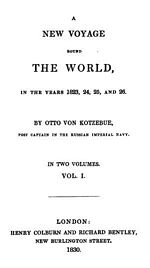
|
1830 Kotzebue Otto Von Kotzebue. |
|
|
While Captain Kotzebue did not visit Pitcairn's Island in 1823-26,he did include a 25-page chapter on the island in the account of his voyage. In his retelling the stories of the mutiny on the Bounty and the history of the Pitcairn's Island community he seems to rely on Shillibeer's A Narrative of the Briton's Voyage, to Pitcairn's Island. Two other sources were consulted. The first was the captain of an American ship whom he met in Chile. The other was Jenny - the Tahitian woman who had left Pitcairn's Island in 1817 on the ship Sultan. The master of the American ship Eagle was apparently Captain William Morrill. This vessel was from Georgetown, D.C., and carried stores for the American navy squadron on the Pacific coast of South America. The Eagle sailed November 28, 1824 for Valparaiso and Lima and returned to Baltimare on November 4, 1825. |
||
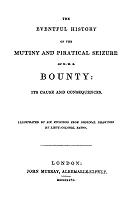
|
1831 - John Barrow's History. The eventful history of the mutiny and piratical seizure of H.M.S. Bounty: its cause and consequences. Illustrated by six etchings from original drawings. by lieut.Colonel Batty. London: John Murray, Albemarle-street. 1831. |
|
|
The first book-length history of both the Mutiny and the colony on Pitcairn's Island. |
||
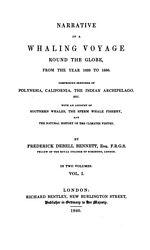
|
1840 Bennett Bennett, Frederick Debell |
|
|
Frederick D. Bennett's book was one of several used by Herman Melville as basic sources for Moby Dick. Bennett, a surgeon, wrote of the island's history, ethnography, and natural environment. Pitcairn's Island was in turmoil when Bennett's ship, the Tuscan of London (Captain T.R. Stavers) arrived in March 1834 owing to the recent establishment of Joshua Hill on the island. When the Tuscan sailed, it carried the three Englishmen who had lived for some years on Pitcairn's and were married to Pitcairn women. |
||
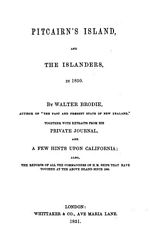
|
Walter Brodie's classic 1851 work on Pitcairn's Island in the middle of the 19th century. Walter Brodie. |
|
|
After becoming stranded on Pitcairn's Island en route from New Zealand to California Brodie collected documents and accounts of the history of the island. The book contains his transcription of the Pitcairn Island Register and the list of shipping for vessels touching at the island. |
||
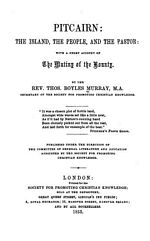
|
Thomas Boyles Murray's classic mid-19th century history of the mutiny and the colony on Pitcairn's Island. Thomas Boyles Murray |
|
|
The first of more than twelve editions of a history of Pitcairn's Island written from a decidely evangelical Chriatian point of view. |
||
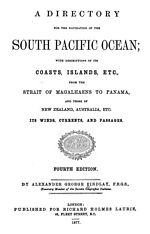
|
The Pitcairn Island section from Findlay's Directory for the Navigation of the South Pacific Ocean Alexander George Findlay, |
|
|
Descriptiion of Pitcairn's Island and its neighboring islands from one of the standard 19th century reference sources for information about the islands of the Pacific Ocean. |
||

|
1878 de Horsey "Pitcairn Island." Algernon Frederick Rous de Horsey. Morning Post (London), December 4, 1878, p.3.. |
|
|
Largely a transcription of part of Admiral de Horsey's report to the Admiralty in 1878. |
||
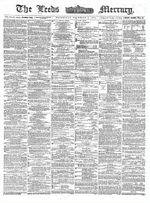
|
1878 de Horsey "The Pitcairn Islanders." Leeds Mercury, December 7, 1878. |
|
|
Admiral De Horsey visited Pitcairn Island on September 8, 1878. The article in this newspaper is based on his report to the Admiralty. |
||
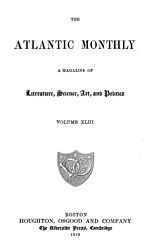
|
1879 - Mark Twain: The Great Revolution In Pitcairn "The Great Revolution In Pitcairn." Mark Twain. Atlantic Monthly, Vol. 43 (March 1879), pp.295-302. |
|
|
|
||
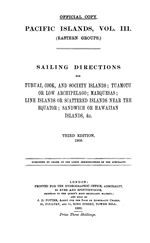
|
Selection - Sailing Directions for Pitcairn's Island - 1900 Pacific Islands, Vol. III: Sailing Directions for Tubuai, Cook, and Society Islands; Tuamotu or Low Archipelago; Marquesas; Line Islands or Scattered Islands Near the Equator; Sandwich or Hawaiian Islands, &c. Third Edition. London: Hydrographic Office, Admiralty, 1900. pp.106-110. |
|
|
|
||

|
1906 - Bladen on the Settlement of Norfolk Island F. M. Bladen. |
|
|
|
||
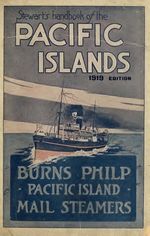
|
Stewart's Hand Book for 1919 Allen, Percy S. Stewart's Hand Book of the Pacific Islands: A Reliable Guide to all the Inhabited Islands of the Pacific Ocean . . . . for Traders, Tourists and Settlers. With a Bibliography of Island Works. By. Percy S. Allen. Sydney: McCarron, Steward & Co. Ltd., 1919. pp. 284-286. |
|
|
|
||
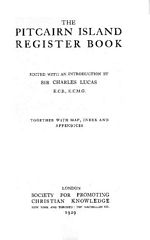
|
1929 - The Pitcairn Island register book Lucas, Charles, Sir (ed.) |
|
|
|
||
